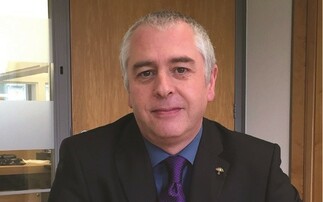Defined contribution (DC) pensions have long struggled to deliver outcomes when compared with their defined benefit (DB) peers.
Despite Chancellor George Osborne's dramatic DC overhaul (see page 10), DB provision is still associated with greater stability and higher income levels.
Cheviot Trust chief executive Ellie McKinnon says there are a number of lessons DC schemes can learn from their older siblings.
While the amount of money going into DC is undoubtedly a driver of retirement income, McKinnon stresses that schemes can provide greater certainty and make sure members know what they're facing in retirement.
"Investment and communication are both absolutely crucial for good outcomes," she says.
"We have always looked at investment in a very engaged and interested way. We've been seeing changes in our DB schemes and we look to the opportunities there and translate it the best you can to a DC environment."
Targeting returns
The Cheviot Trust is a multi-employer master trust, initially founded in the legal sector, although it now accepts other employers. Founded in 1930, the organisation runs a DC trust alongside 16 individually-sponsored DB schemes.
Ensuring a DC service on a par with DB provision is a key aim for Cheviot, McKinnon says.
"We don't see why members in a DC, where it's much more important to them as individuals to get it right, should get a worse investment service than in DB," she says.
While Cheviot operates a "very sophisticated" DC platform strategy, advised by P-Solve, members are provided with simple, easy-to-understand risk options: Growth, Moderate and Cautious.
McKinnon explains: "We have our three options, they're simple for members and they're targeted on an inflation-plus basis depending on the risk profile."
Targets and inflation protection are two of the most basic elements DC schemes can fail to take from DB strategies, something that McKinnon says is a "struggle to understand".
She explains: "I don't understand how you can have DC options that don't target inflation. How is that delivering a good outcome? It frightens me how many don't.
"We were looking at a big DC provider a couple of weeks ago, looking for the target, and there wasn't one. How is that ever going to deliver good value for members?"
Cheviot's Growth profile targets retail price index (RPI) +5%, while Moderate targets RPI +4.25% and Cautious: RPI +3.5%. A fourth Retirement Protection profile targets annuity rates.
Remaining agile while providing stable returns is key to Cheviot's approach, McKinnon says.
She says: "It's really important for members to see stability of returns; the negativity of a bad return can put them off for years.
"Our experience over the years is you have to have a wide asset range, as it gives you more stability.
"You also have to move quickly. You can't be in the position where you think, ‘we need to change that manager' and then it takes four months to do it."
The platform arrangement allows Cheviot to make asset allocation changes within 24 hours.
Getting to the right destination
While most people like to talk about DC flight-paths, Cheviot Trust prefers a "more down-to-earth" image: a bus.
McKinnon explains: "The whole aspect for members is that you get on board and someone else is driving, and it's a journey. We think that's the type of graphic you're going to grab members with."
Images typically associated with retirement - older couples, beaches, sunsets - are "banned" from member communications, as "that's the last piece of paper" they would want to read, McKinnon says.
Simplicity and personalisation is key to communications success, McKinnon says.
Investment information is colour-coded and information is provided in bite-sized chunks.
"We ripped up all of our communications a couple of years ago," she says.
"We said, ‘What questions do members ask us? They will drive communications.' Following that lead you do end up complying with disclosure rules, but you put it in questions the members want to ask."
Benefit statements have been overhauled to make sure members cannot be "under any illusion" about how much they could receive in retirement.
McKinnon says: "People have a completely unrealistic idea of what a fund will buy. They will have a wildly inflated view of what £100,000 will get you. Yet most DC benefit statements show fund value first. When we spoke to members, they said they never looked past that.
"Our benefit statements now start, at the top, big box, ringed, ‘Your estimated income in retirement is __'. Members can't be under any illusion about it; fund value is not a helpful piece of information for people who don't understand the value of annuities."
While not all benefit statements can be sent out by email - some members "just won't do that" - Cheviot's electronic statements achieved a 63% open rate on first issue last year. A personalised follow-up email saw a further 26% take a look. For McKinnon, the success was "really staggering".
"I think it's because it didn't look like pensions communication," she adds.
Drawing down
Even ahead of the government's overhaul of retirement options, Cheviot has been not only driving home the value of DC pensions, but also the fact that annuitisation might not be the only option.
As more members tapped into drawdown, Cheviot Trust established a "streamlined" advice process for those looking to explore the option.
Speaking before last week's Budget announcement, McKinnon said: "It's a big investment decision; people have to take advice, but on that basis we've agreed a streamlined advice process. Members leave their funds in our diversified, actively manage pot, and they get all the flexibility that goes with that.
"On that basis, we think it may be more appropriate for people with smaller fund sizes, particularly people who are staggering their retirement."
Getting members to the right outcomes is essential, McKinnon says.
"What are we trying to do? We're trying to deliver good outcomes for members," she says.
"There's not much point in being a not-for-profit trust that is there for pension provision if that's not what you do at the end of the day."







